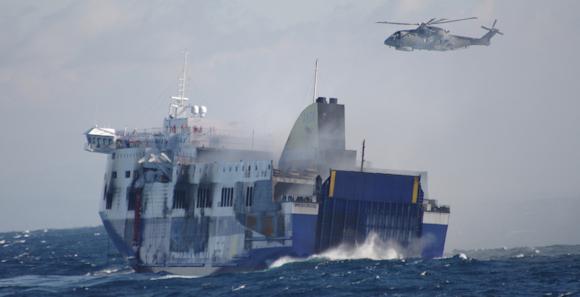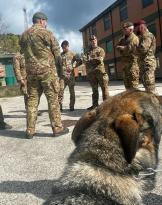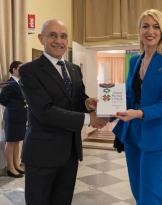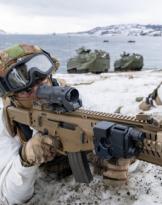Six years have passed since that dawn of 6 December 28, when a fire broke out on board a ferry flying the Italian flag, the "Norman Atlantic".
The ship from Greece was headed for the port of Ancona but 30 miles off the Italian coast, near the Otranto canal, flames and smoke triggered the alarm. The rescue machine was immediately put into operation and the Navy responded to requests for help from the "Norman Atlantic", promptly intervening with vehicles and men to rescue the nearly 500 people who were on board. A quick, dangerous but absolutely necessary operation to be completed and completed in the shortest possible time.
The meteorological situation was prohibitive: winds at 40 knots (75 km / h), very rough sea with waves up to 6 meters. From Navy Aircraft Station of Grottaglie, three AB-212s and an NH-90 took off and reached the ferry to monitor the area and immediately know the seriousness of the situation, while from Navy Aircraft Station Catania fled three EH-101s immediately aiming for the same goal. From the port of Brindisi, after a very rapid preparation and recalled on board the crew, Nave St. George he released his moorings and sailed towards the "Norman Atlantic", followed by the destroyer Durand de La Penne, stationed in Taranto. Vehicles of the Air Force, the Port Authority and some civil boats available in the immediate vicinity also participate in the rescue operations.
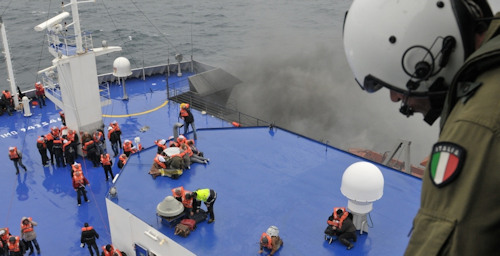 The goal was to rescue the passengers and crew on board in the shortest possible time, given the gravity of the situation which left no margin. The conditions of the ferry were in fact seriously compromised, so it was necessary to act with extreme resolve. In that circumstance, the aircraft component of the Navy was decisive in the success of the enterprise, best used by Nave St. George with the support of Nave Durand de La Penne in an exemplary model of "sea-basing", an authentic flagship of the naval team.
The goal was to rescue the passengers and crew on board in the shortest possible time, given the gravity of the situation which left no margin. The conditions of the ferry were in fact seriously compromised, so it was necessary to act with extreme resolve. In that circumstance, the aircraft component of the Navy was decisive in the success of the enterprise, best used by Nave St. George with the support of Nave Durand de La Penne in an exemplary model of "sea-basing", an authentic flagship of the naval team.
The story of that long night gives us an apocalyptic picture made of high flames that licked the upper deck of the boat, the strong winds that made the recovery of the castaways particularly complex, the impetuous waves that contributed to making the ferry more unstable. Rear Admiral Pierpaolo Ribuffo, head of the 3rd naval group of the Italian Navy, embarked on the amphibious unit St. George, assumed command of the operations, coordinating men and means at his disposal. In the following hours - with a stormy sea and powerful winds - an incessant sequence of take-offs and landings of the EH-101s, were able to transport up to 20 people at a time from the "Norman Atlantic" to the deck of the San Giorgio ship, for a total a total of 149 flight hours. Precious and fundamental for the timeliness of the rescue was the work of the medical and health personnel of the Navy on board our units, present and operational from the initial stages of passenger recovery.
 The operations of the transfer of the castaways (184 recovered from Nave St. George and 31 transhipped by ship Durand de La Penne) ended in the early afternoon of December 29, at the end of which the trailer phase of the "Norman Atlantic" was immediately started.
The operations of the transfer of the castaways (184 recovered from Nave St. George and 31 transhipped by ship Durand de La Penne) ended in the early afternoon of December 29, at the end of which the trailer phase of the "Norman Atlantic" was immediately started.
On 30 December, with the arrival in the port of Brindisi and the mooring of Nave St. George, the intervention of the Navy ended, during which the Armed Force highlighted its vocation to quickly project precious skills to better manage critical situations where they occur, and the versatility of use even in non-military actions to give a fundamental contribution to the community in times of emergencies and natural disasters. Also, and above all, on that occasion a fundamental connotation of the Navy emerged which - with the use of its naval, air and health component in the operations - fully expressed its characteristic expeditionary.
The "Norman Atlantic" case, in what many call a case history, was an example of excellent management of a critical situation in which each actor contributed with their specificities and skills to cooperate for the noblest of objectives: saving lives.


